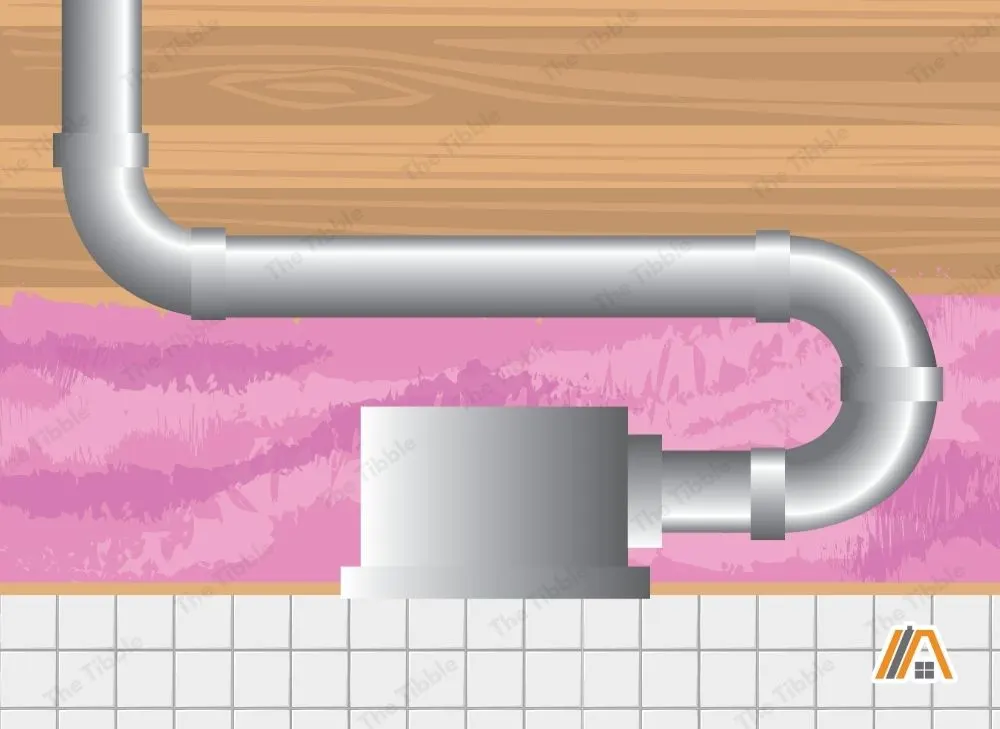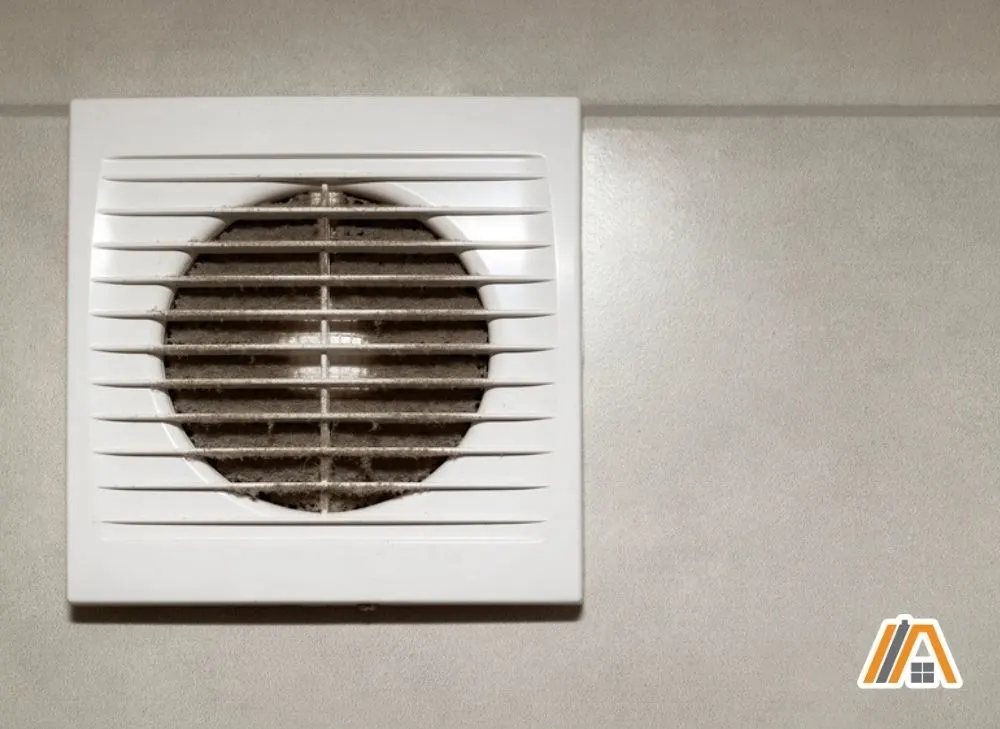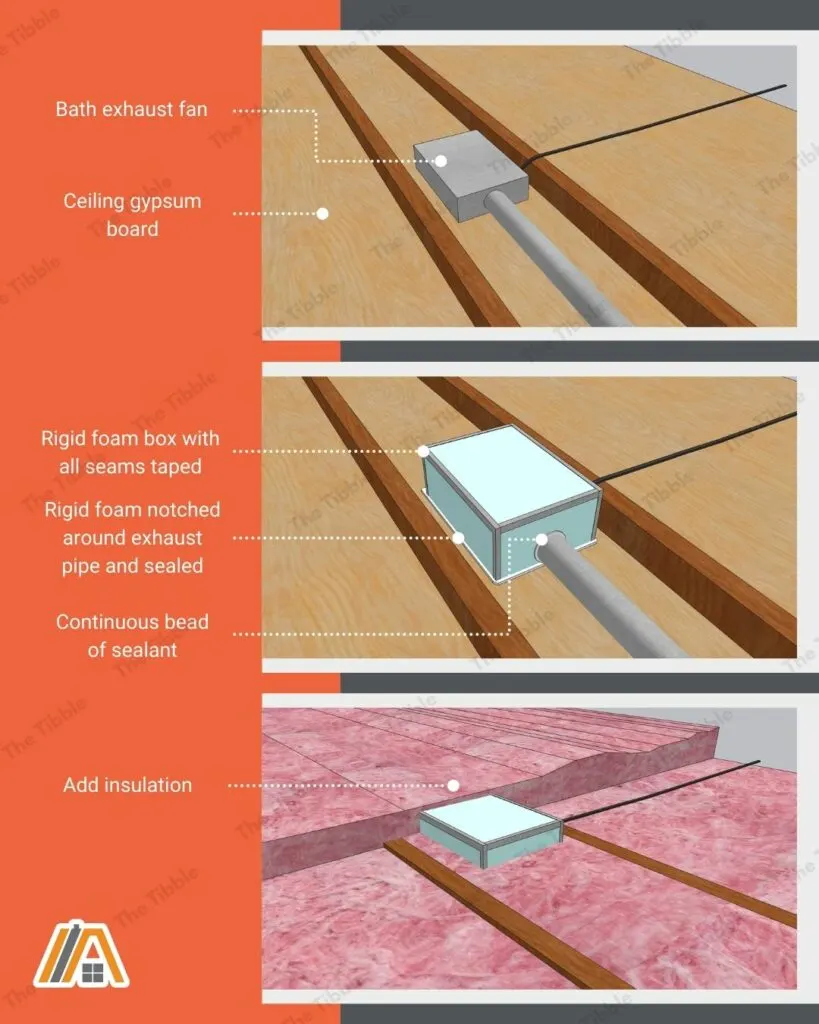The space above a ceiling is the meeting point for so much of your home’s infrastructure. Here, you will find water pipes, air ducts, electrical wires, insulation, and often more. All these things have to be able to exist and operate together safely, so there are rules that govern how they should be installed.
When it comes to insulation, whatever it covers should not generate significant amounts of heat because this would then be trapped, creating a fire hazard. Under certain circumstances, the electricity-operated motor in a bathroom exhaust fan can generate problematic levels of heat.

In general, insulation can be placed over bathroom fans without causing problems associated with trapped heat. However, some older fans as well as those that are very dirty or in poor condition can over heat. The best thing to do is consult the manufacturer and make sure the fan is properly maintained.
Insulation Is Allowed (and Important)
I cannot find any information in the International Residential Code (IRC) about whether or not you can or should put insulation over bathroom houses. The IRC is the basis of local building codes for 49 or the 50 states in America as well as the US territories, which is why I started there.
However, I did find out that insulating over a bathroom fan is a common practice—one that is important in maintaining the integrity of the a home’s thermal envelope.

It helps to prevent the creation of a break in insulation, which can act as a point of significant heat loss from a house.
Since air is being pulled towards the fan as a result of its natural function, any spaces or gaps in the ceiling will allow air to pass into the attic from where it is lost.
When conditioned air or heat is lost in an uncontrolled manner, you pay for it quite literally. Your HVAC system or independent heating systems have to work harder and/or longer to keep the house at the desired temperature.
Insulating Over/Around the Bathroom Fan Checklist
Just because insulation is commonly laid over bathroom fans doesn’t mean that it always can be. There are certain circumstances when this should not be done. Here’s a checklist to help you figure out if you should or should not do it.
- What does the manufacturer say?
- The place to look for this information is the owners manual. It will most likely be found in the “installation” section.
- You can check for the online manual if you want to know before buying or if you have lost your paper copy. Here is an example (the insulation instructions can be found on the last page).
- You can also call the customer service center for the information, particularly if your manual does not say whether or not you can cover the fan with insulation.
- The place to look for this information is the owners manual. It will most likely be found in the “installation” section.
- How old is your fan?
- Older fans, produced in a previous age of technology, produce more heat during normal operation. They just don’t have the design for low-heat functioning.
- Even if your fan has the capability of operating while producing little heat, when it is old, it is more likely to overheat due to wear and tear on all the various parts.
- Is your fan functioning optimally?
- A fan that is not functioning optimally is one that is more likely to suffer from overheating. Function can be compromised by:
- Poor installation.
- Age.
- Overuse (bathroom fans should not run for extended periods of time).
- Incorrect sizing (for the bathroom size).
- Lack of cleaning and/or maintenance.
- Incorrect duct sizing.
- Lack of duct insulation.
- Etc.
- A fan that is not functioning optimally is one that is more likely to suffer from overheating. Function can be compromised by:

- Have you noticed any signs that would indicate that the fan is overheating?
- Sometimes, you don’t know if your fan is functioning optimally or is at risk of overheating. Here are some signs to look for which would indicate your fan should not be covered with insulation:
- The smell of burning.
- The fan housing is excessively hot to the touch.
- Smoke.
- The fan keeps tripping the circuit.
- Sometimes, you don’t know if your fan is functioning optimally or is at risk of overheating. Here are some signs to look for which would indicate your fan should not be covered with insulation:
Alternative to Laying Insulation Directly Over Fan
If you are worried about laying the insulation directly over your bathroom fan (whether you have a reason to be worried or you are just feeling cautious), you can build a box cover over the fan housing.
This box cover is made from foam board, which is a type of insulation but it is constructed to go over and not rest against the fan housing. The space between the fan housing and the box allows enough space for heat to dissipate as opposed to being trapped inside the fan housing.
It is the structure that acts as the housing of the exhaust fan. It can be made from rigid foam. The box and the duct can be covered with attic insulation.

Spray foam can be used to seal the box to the ceiling drywall and around the exhaust pipe. Make sure the rigid foam board notched around the exhaust pipe is sealed perfectly.
Can Insulation Be Placed Over Panasonic Bathroom Fans
Loose-fill or batt insulation can be placed directly over the fan housing in the attic. The efficient, cool running motors, LED, and fluorescent bulbs in Panasonic fans do not create enough heat to prevent using insulation.
Among the Panasonic models that allow insulation around & above the bathroom fan are:
- Panasonic FV-08-11VFL5E
- Panasonic FV-0511VQ1
- Panasonic FV-08-11VF5
Can Insulation Be Placed Over Broan Bathroom Fans
According to Broan, as long as it is not a heater/fan combination, it can be covered with insulation up to R40.
R-value is a measure of resistance to heat flow through a given thickness of the material, which means the higher the R-value, the greater the insulating effectiveness.
R-40 means about 10 inches of insulation.
Here are some of the Broan bathroom fans:
- Broan-NuTone HD80L
- Broan NuTone AE110LK
- Broan-NuTone 678
Can Blown-in Insulation Be Used Over Bathroom Fan
It is okay to use blown-in insulation over the bathroom fan since most fans are rated for direct contact insulation.
However, you may choose to use a piece of thin plastic over the fan and then allow the insulation to cover over the plastic.
Using the piece of thin plastic keeps the dust from coming in the little holes in the housing.
If there are any small holes in the housing tape them using HVAC tape since blown-in insulation could fall into the fan over time.
Make sure to caulk the ceiling fan seam to prevent heat loss and dust from the attic from falling down.

